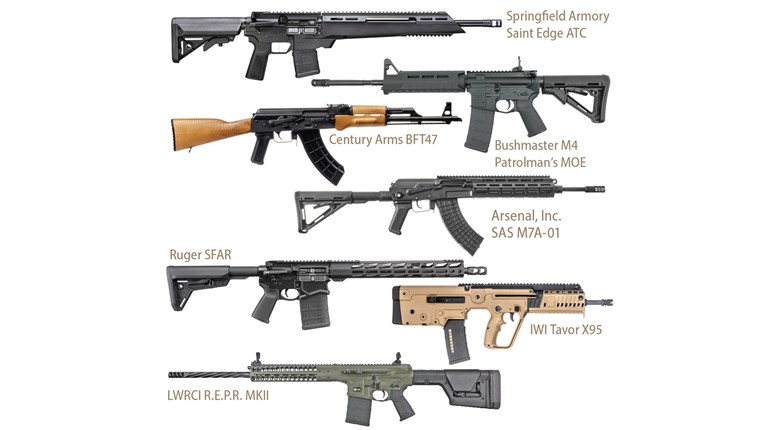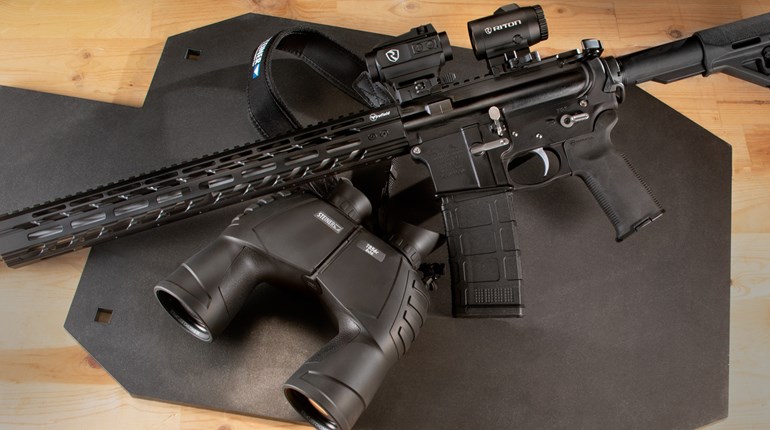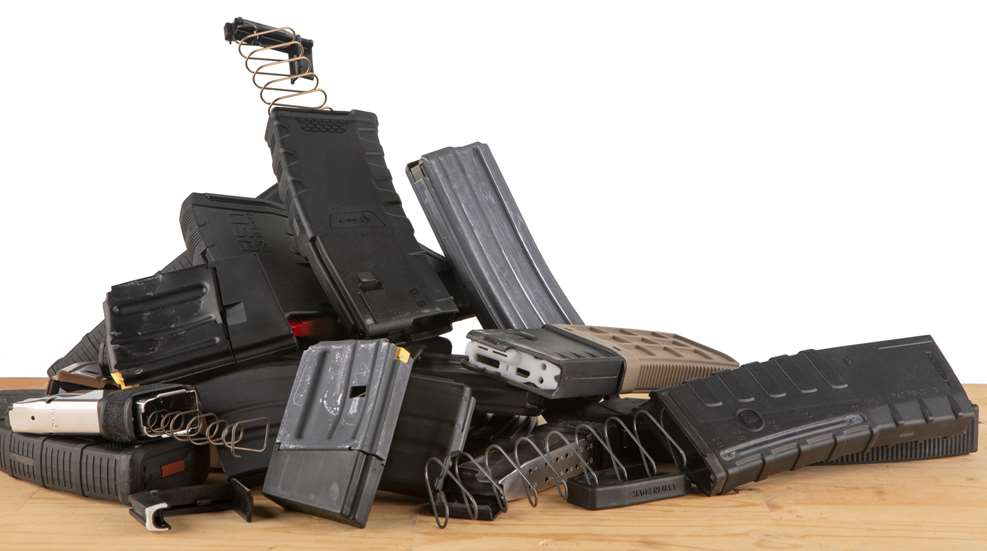
Regardless of where you go for firearm information, some form of gun testing is likely to figure into the results you dig up. Consumer appetites for this information are just as vigorous as in other industries. After all, who doesn’t appreciate a thorough review of products before laying out money for one? While firearm publications spend much time focusing on the specifications and performance evaluations of different guns, ammunition and the occasional optic or sound suppressor, one critical component to modern-firearm designs—the detachable magazine—often gets little attention. Just like car tires, magazines are components that are required for proper function of larger systems. Rather than being an expendable accessory, perhaps we should give our feeding devices the credit they are due as critical components. I’m not going to add to the massive volume of torture testing that has been performed on magazines by intrepid individuals and magazine manufacturers. Instead, I’ll address some topics derived from questions we receive that relate to magazine durability and care.
Material Focus
The only things I can lay claim to having engineered in my life are a handful of really good practical jokes, so I won’t pretend to understand the technical details of different materials. However, I will share what I’ve observed over the past few decades of shooting firearms with detachable magazines. Unsurprisingly, steel magazines seem to lead the way in rigidity, with aluminum and polymer following, respectively. Good-quality polymer mags—such as models from Lancer, Magpul, Hexmag and MFT—have more “give,” allowing their walls to rebound after being placed under pressure. While I don’t know what the weight ratings are for different magazines, with the exception of original, steel AK mags and a handful of other, more obscure steel designs, my experience is that takes more weight or abuse to break polymer magazines than it does to bend or dent the sheet-steel or aluminum versions.
Other considerations may come into play here, too. I can vouch for the fact that if everything you need to survive (for days or weeks) is strapped to your body, the additional weight of steel-bodied magazines matters. However, polymer models have thicker walls and ribs, making them larger than steel or aluminum models for the same firearm. As a result, these fatter mags may have trouble sliding easily into or out of full magazine pouches, making aluminum an attractive alternative to both options. That said, polymer tends to be quieter than steel or aluminum when multiple magazines bounce against each other in a pouch. As with everything else in life, there are trade-offs in the material department.
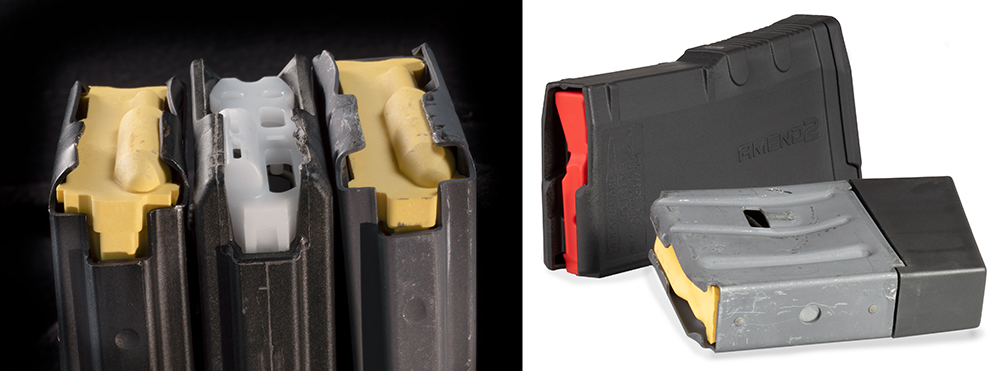
Drop It
Like most people who have spent the bulk of their lives with firearms in hand, I’ve dropped a few gazillion empty magazines to the ground while reloading. Whether bolt-action, semi-automatic or selective-fire rifles, light machine guns, semi-auto pistols, submachine guns or shotguns, their feeding devices have mostly dropped to the ground harmlessly. The exceptions have come when empties were dropped into mud, talc-like sand or when they end up with debris stuffed into their openings. In those cases, a quick wipe down generally solved the problem. Occasionally, deeper cleaning was required when debris found its way into a magazine’s inner workings.
My magazines have tumbled off of moving vehicles, multi-story buildings and even the occasional helicopter. About the only scenario where I haven’t dropped a magazine was during freefall or under a parachute—at least not that I was aware of. The mags that were later recovered did fine unless they hit a hard surface at high speed or from altitude, or were fully loaded (oops). Naturally, the more weight that is inside a magazine, the greater the spring loading, component stress and chances that damage will occur on impact. I’ve trampled on a bunch of box magazines and ran over a few, too, but I’ve never damaged one by simply stepping on the body. On the other hand, the feed lips can bend or break when under foot and on firm ground. Whether or not they survive being run over depends on the type of surface they’re on and what did the running, but an impressive number of magazines have continued working for me, tire marks and all.
Fully loaded steel and aluminum rifle magazines sometimes lose their floorplates after hard impacts with concrete, asphalt or similar surfaces. If the floorplate-retaining tabs get bent, simply easing the tabs back into their normal positions and reassembling the magazine often fixes the problem. Conversely, feed lips are harder to get back into their proper shapes when a weighted steel or aluminum mag lands open side down. Polymer mag lips don’t bend out of shape, but they can chip or crack if they take a hard, direct hit. I have seen some keep chugging along fine while others have been rendered worthless, depending on the extent of the breakage. Sub-zero temperatures can also be hard on certain polymers, causing them to lose flexibility and increasing the likelihood of damage through impact or other abuse.
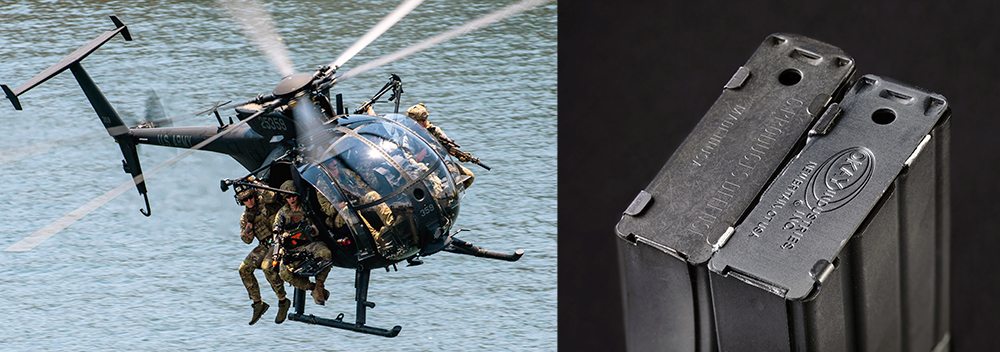
Cleanup on the Mag Aisle
If you are old enough to have been part of the 1990s-era IPSC community, you probably watched intrepid competitors religiously clean the double-stack mags for their fancy, new, wide-body .45 ACPs between stages. Those early, large-bore double-stack mags were notorious for malfunctioning after simply being dropped onto any surface that wasn’t clean. Most modern steel and polymer, single- and double-stack pistol magazines don’t miss a beat after being dropped, but occasional maintenance is always a good idea for any firearm magazine—especially if you do a lot of suppressed shooting, particularly if using subsonic ammunition.
Stripping most magazines down to body, spring, follower and floorplate is not difficult. Wiping out the bodies and clearing any lint, gunk or other foreign matter off all parts helps springs and followers move properly. Checking function through actual live fire is the best way to verify that mags work as designed, but hand-cycling dummy rounds can often expose feeding issues before any money is spent on ammo. Also, simply stripping live rounds out of a magazine in the same manner that they’re fed (i.e., straight from rear to front, clearing the feed lips) can help spot problems like a stuck follower, weak spring or bent feed lips.
None of the dry lubes I’ve applied to magazine parts over the years have been completely trouble-free, so I do not personally lubricate my magazines’ internals. Wet lubricants are magnets for gunk and debris and should be avoided inside magazines, except in a rusted-mag-with-zombies-in-the-wire emergency. I’ve had the best results by leaving my magazines dry and clean inside. There is a wide range of opinions as to how long magazines can be left loaded, so I won’t wade into that debate. If your current system of rotating mags works, that’s great. If not, shorten the cycle until it does. I’ve devolved to annual rifle mag and quarterly pistol mag rotations and haven’t had any problems in either case.
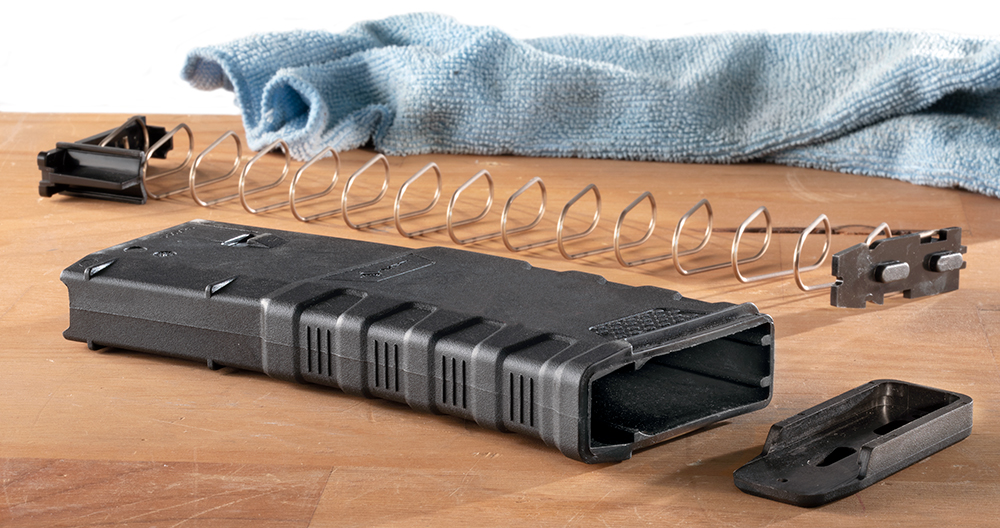
And Then There Were Many
I use different brands and styles of magazines according to specific firearm types and calibers, so answers to questions about brand recommendations are dependent on several factors. While space doesn’t permit a litany of my personal favorites here, some interesting observations can be gleaned from fragments of two U.S. military weapon system and component evaluations. Most notably, that Magpul’s 5.56 NATO AR magazines seem to have outperformed several other prominent magazine brands in both Army and Marine Corps tests between 2015 and 2017. While I have not personally viewed the full documents that are purported to show this result (Final Report for the M855A1 Conformance Testing of Commercial Magazines, The US Army Aberdeen Test Center, January 2015 and Test Report for M4A1/RIS II URG 10.3/M855A1 Performance and Endurance Test, NAVSEA Warfare Centers, Crane, 2015), Magpul’s dominance meshes with results I experienced in combat and during later technical evaluations. Of course, my Army time ended 15 years ago, as did my relevance to anything military.
I remember when an aftermarket, anti-tilt follower was the only improvement offered for our standard-issue, Colt 20-and 30-round 5.56 NATO magazines and Knight’s Armament made the only reliable 7.62 NATO magazines for semi-automatic sniper rifles. Our single-stack 1911s had several excellent options: like seven- and eight-rounders from Shaw and eight- and 10-rounders from Wilson Combat. That was it, but we considered ourselves lucky to have choices at all. Today’s offerings have better designs, are made with superior materials and, most importantly of all, are far more reliable than at any time I can recall. Go ahead and drop them free while doing your reloads, but check for people below you if you happen to be hanging off of something flying through the air.













